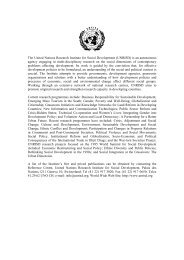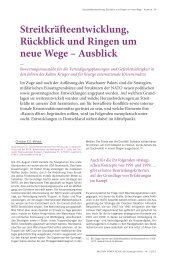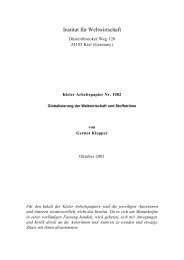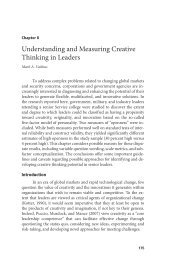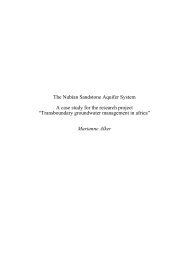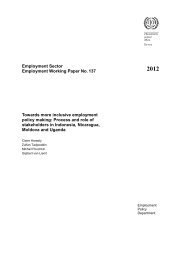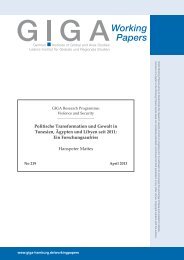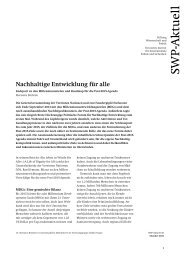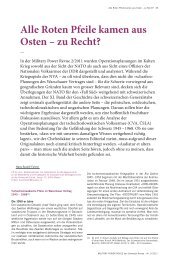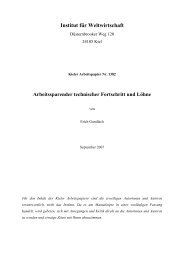Global Jihad: temi, piste di diffusione e il fenomeno del reducismo ...
Global Jihad: temi, piste di diffusione e il fenomeno del reducismo ...
Global Jihad: temi, piste di diffusione e il fenomeno del reducismo ...
Create successful ePaper yourself
Turn your PDF publications into a flip-book with our unique Google optimized e-Paper software.
(heat) and ionising ra<strong>di</strong>ation; there is also a more <strong>del</strong>ayed effect which manifests<br />
from hours after the event and can persist for centuries afterwards which cause<br />
health<br />
and environmental damage due to ra<strong>di</strong>oactive fallout. The imme<strong>di</strong>ate effects<br />
are confined to the area surround the detonations wh<strong>il</strong>st<br />
then <strong>del</strong>ayed effect can<br />
manifest in more <strong>di</strong>verse geographical locations.<br />
Ra<strong>di</strong>ological terrorism, by contrast, refers to <strong>di</strong>spersal<br />
devices designed to use or<br />
<strong>di</strong>stribute ra<strong>di</strong>oactive material<br />
to cause a harmful<br />
someone. l weapon (popularly called a<br />
131 The main aim in using a ra<strong>di</strong>ologica<br />
ra<strong>di</strong>oactive material and explosive. A passive RDD<br />
is a system in which unshielded<br />
- often called a "<strong>di</strong>rty bomb" - is any system that uses the explosive force of<br />
detonation to <strong>di</strong>sperse ra<strong>di</strong>oactive material. An atmospheric RDD is any system in<br />
which ra<strong>di</strong>oactive material is converted into a form that is eas<strong>il</strong>y transported by air<br />
currents.<br />
Examples of accidental contamination with an<br />
industrial ra<strong>di</strong>ation sources exemplified the<br />
potential for a terrorist group to traumatise an<br />
unsuspecting population. A serious ra<strong>di</strong>ological<br />
effect upon something or<br />
ra<strong>di</strong>ological <strong>di</strong>spersal device or RDD) is therefore to ut<strong>il</strong>ise the ra<strong>di</strong>oactive material<br />
to contaminate areas and/or injure targets, as opposed to a nuclear weapon where<br />
the destructive explosive power is the aim and ra<strong>di</strong>ological contamination is merely<br />
a secondary effect. RDDs can be almost any size, defined only by the amount of<br />
ra<strong>di</strong>oactive material is <strong>di</strong>spersed or placed manually at the target. An explosive RDD<br />
Ra<strong>di</strong>ological devices require no<br />
deta<strong>il</strong>ed technical understan<strong>di</strong>ng<br />
beyond that required for the<br />
manipulation of the conventional<br />
explosives which would be used in<br />
the case of an RDD, or in basic<br />
aerial <strong>di</strong>spersal in the case of a<br />
ra<strong>di</strong>ation emission device.<br />
131 Ra<strong>di</strong>oactivity is the property or con<strong>di</strong>tion of certain elements that results in the spontaneous transformation, or<br />
decay, of the nucleus of an unstable atom. As the unstable atom tries to change to a stable state, it releases energy<br />
in the form of ra<strong>di</strong>ation. This energy is release in one of three forms: alpha ra<strong>di</strong>ation, which is equivalent to a<br />
helium nucleus and can be stopped by a thick piece of paper; beta ra<strong>di</strong>ation, which is equivalent to an electron<br />
and w<strong>il</strong>l be stopped by human skin; and gamma ra<strong>di</strong>ation, which is an energy wave and capable of greater<br />
penetration than either of the other two forms. Substances that undergo this transformation process are called<br />
ra<strong>di</strong>oisotopes, or more commonly, ra<strong>di</strong>oactive materials. Once the substances are processed into a usable form,<br />
such as pellets or powder, they are called ra<strong>di</strong>oactive sources. Depen<strong>di</strong>ng upon the amount of energy release and<br />
the form it takes these ra<strong>di</strong>oactive sources<br />
can be classified as low-activity, interme<strong>di</strong>ate-activity, or high-activity<br />
sources.<br />
212





